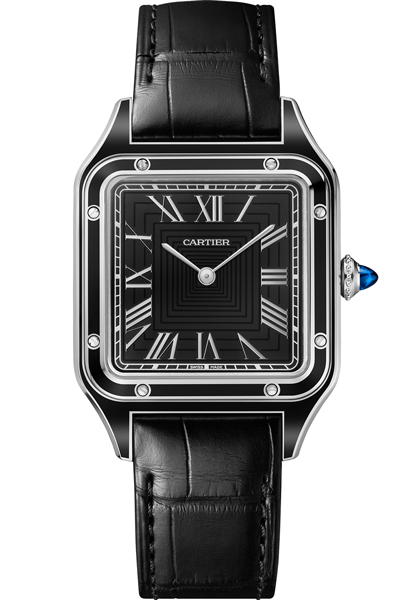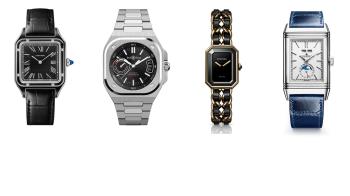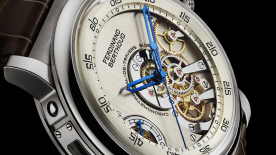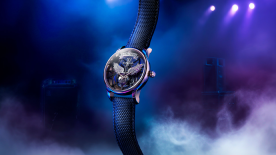According to received wisdom, watches are naturally round. But that’s far from being true in reality. Many different shapes are possible, and the square is one of the most common.
It should come as no surprise to learn that the very first wristwatch – the Cartier Santos – had a square face. Louis Cartier designed it in 1904 for his friend, aviation pioneer Alberto Santos-Dumont. At the turn of the last century it was revolutionary, encapsulating a spirit of adventure unleashed by the acceleration of technical progress. But the Santos was more than that. Importantly, it enabled the aviator to tell the time without letting go of the controls of his airborne vehicle. Just three years earlier, in 1901, the pilot shad shown his friend how difficult it was to consult his pocket watch while flying. Louis Cartier became an expert in the art of the square. In 1917 he unveiled the famous Tank, inspired by a bird’s-eye view of a military tank. A pedant might point out that the Tank is not in fact a perfect square (with the notable exception of the Tank Chinoise). And that is true, but when you’re looking at the square as a concept, you’re allowed to take a few liberties, and expand the definition somewhat.

This opens the way for rounded corners, rectangles and the graceful shape inspired by a cushion. Among the perfect squares we might mention is the TAG Heuer Monaco, an iconic timepiece launched in 1969. Not only was it one of the first self-winding watches, it was also the first chronograph with a water-resistant square case. The Monaco rose to fame on the wrist of Steve McQueen, who wore one in the classic Hollywood movie Le Mans, although it is beyond dispute that it’s the shape of the case, designed by Jack Heuer, that makes this chronograph so unique.

Richard Mille, who is known for his tonneau-shaped cases, wanted at least one square watch in his collection, and designed the RM 016.

The same goes for Hermès, which launched the Carré H in 2010. This shaped watch designed by Marc Berthier is modern in its styling, and provides optimum legibility.

Readability is also the watchword of Bell & Ross, which has made the square watch its signature. Bruno Belamich, B&R co-founder and creative director, points out: “The architecture of our case lends itself to minimalism and radicality, lightness and strength. The shape is directly inspired by aeroplane cockpit instruments and timepieces.”

From the square, we move to the rectangle, and the most famous rectangular watch in history: the Reverso by Jaeger-LeCoultre. First launched in 1931, its carefully constructed design owes its lines to the Art Deco movement, and even today embodies the spirit of that era.

A similarly harmonious geometry and purity of line can be found in the Première de Chanel, designed in 1987 by Jacques Helleu, artistic director of the Maison at that time, who said: “I fought to make a strong, unique watch that could remain a reference, rather than being just another collection.”

The final word goes to Patek Philippe, who has created a watch of perfect harmony. The elliptical case of the Ellipse d’Or, a cushion shape midway between a circle and a rectangle, first appeared in 1968. This watch unapologetically distances itself from traditional timepieces, owning its unusual geometry, which is based on proportions that are known to be pleasing to the eye. The design is inspired by the Golden Ratio, the “divine proportion” discovered by Greek mathematicians, which can be found in some of humanity’s greatest works of art and architecture.










